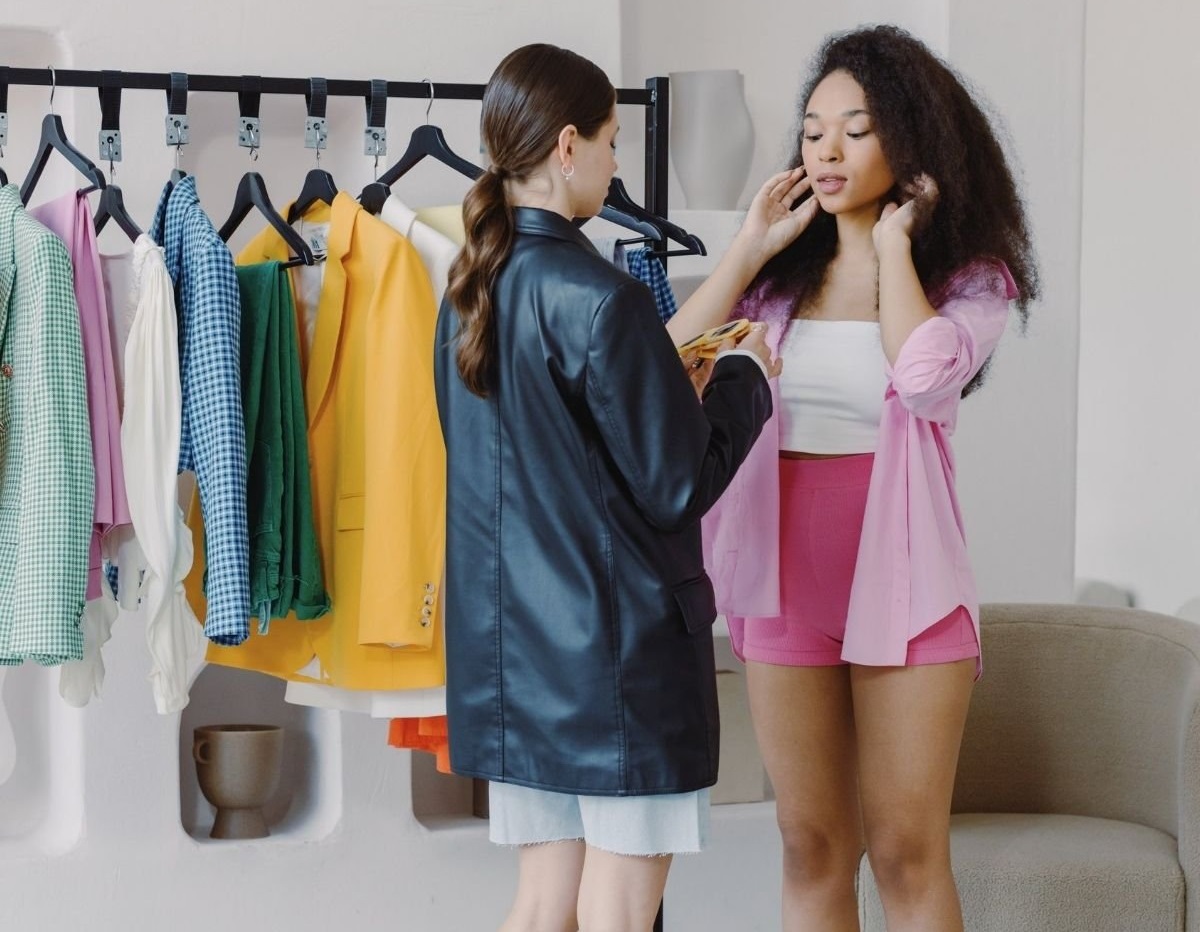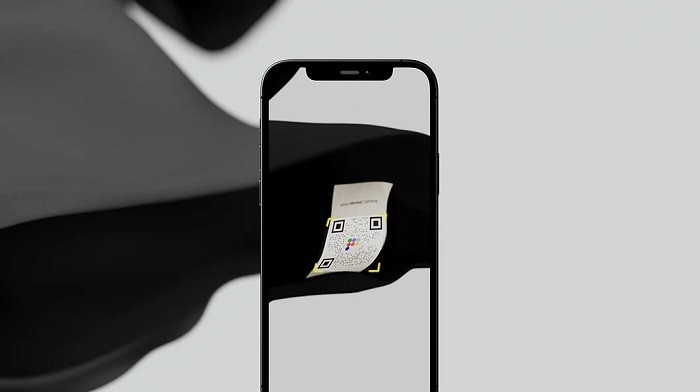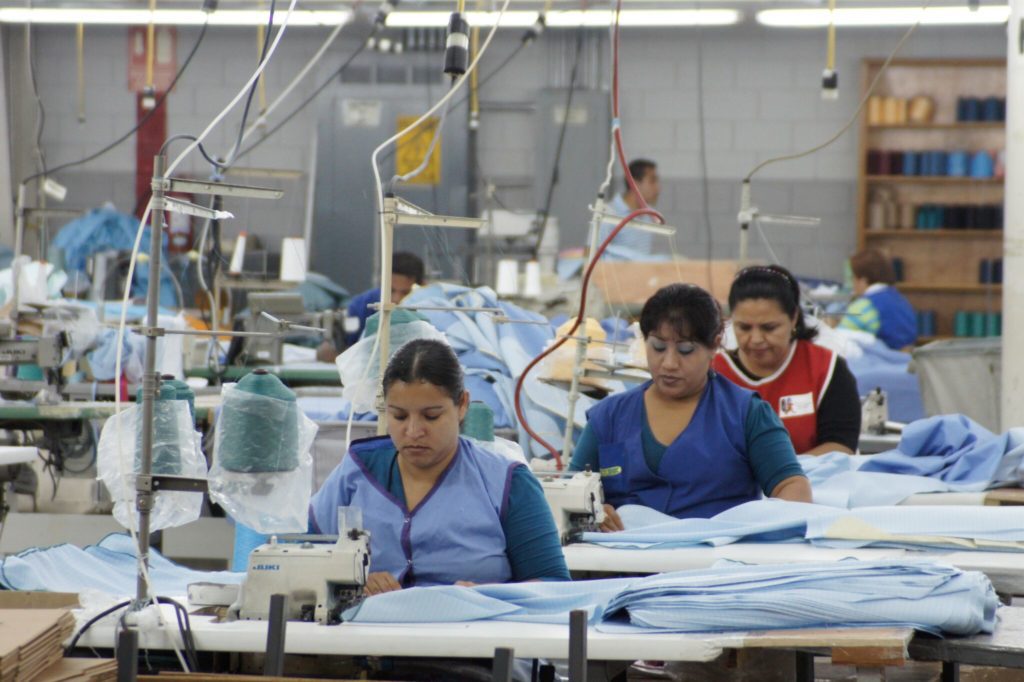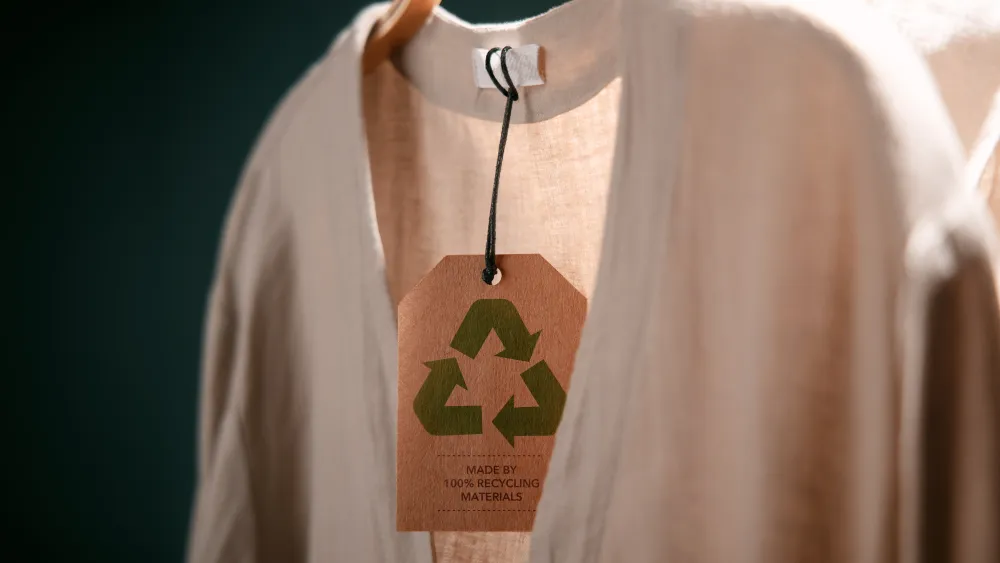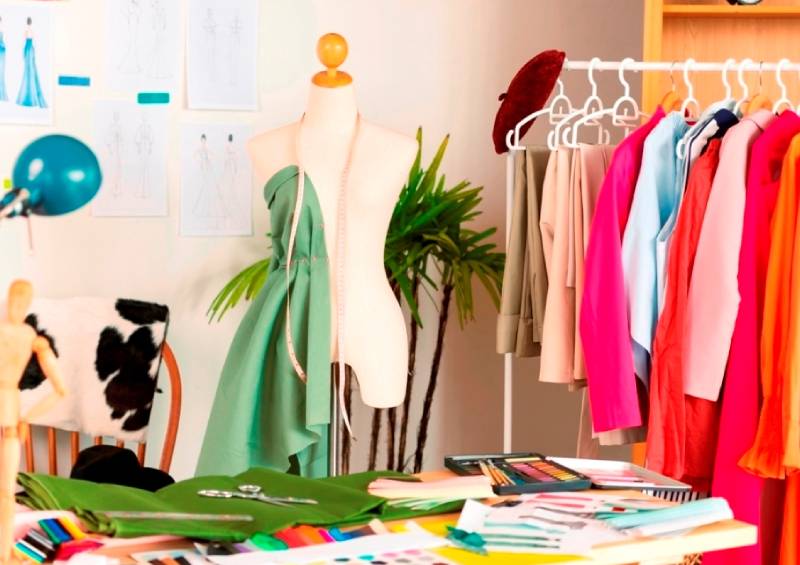FW
Moda, the focal point of Autumn Fair and a leading name in fashion, is set to showcase a substantial expansion in its Fashion Accessories segment. Scheduled for September 1-4 at NEC Birmingham, the event will feature hundreds of new collections, reflecting the booming global market for fashion accessories.
The rapid growth in the fashion accessories market is fueled by ever-changing consumer trends. According to Statista, demand is particularly high in the UK, France, and the US, with contemporary consumers seeking unique, on-trend pieces that elevate their style. WGSN highlights that today's buyers prioritize practicality and long-lasting value in their accessories, with the cost-of-living crisis further driving the trend of gifting these items.
Retailers from diverse sectors are incorporating fashion accessories to enhance their offerings, with brands shifting focus to versatile, durable designs suitable for various occasions. Sustainability is also a major factor, with companies increasingly using ethical materials like repurposed denim and recycled metals.
SorayaGadelrab, Event Director of Autumn Fair, notes the dynamic evolution of the global accessories market, emphasizing the need for brands to stay innovative to thrive. Moda's Fashion Accessories sector promises an array of iconic pieces and curated collections, offering the latest in handbags, hats, scarves, belts, luggage, and costume jewelry.
The show will feature creative brands and designers such as Soruka, Berber Leather, Black Yak, Earth Squared, and many more, presenting collections that cater to both classic and contemporary tastes. Highlights include playfully designed wool socks from Jess & Lou and Soctopus, chic hair accessories, quality leather belts, and stylish hats and scarves from SSP Hats and Pure Fashions. Additionally, the growing luggage sector will present trend-led suitcases and backpacks from brands like Miku and Wholesale Alba.
Autumn Fair 2024 is positioned to be a key event for retailers and buyers, aligning with the peak retail season and providing a seamless buying experience. With over 25 per cent new exhibitors and 30 per cent exclusive to the show, it promises to be the most exciting and well-stocked trade event of the third quarter. Traditional trade shows like Autumn Fair continue to offer vital platforms for new businesses, supporting their growth and visibility in the competitive market.
During July-Mar 23-24, Bangladesh reported a 16 percentage points decline in value addition in the readymade garment (RMG) sector to 55.4 per cent. This decline raises concerns among exporters regarding Bangladesh's eligibility for the Generalised System of Preferences (GSP) Plus facility in the European Union (EU) market following its graduation from Least Developed Country (LDC) status.
According to recent data from the central bank, Bangladesh's apparel exports totaled $27.30 billion in the last three quarters of FY24, significantly lower than the previously reported $37.20 billion. This revision includes a substantial decrease of $6.49 billion in knitwear exports and $3.41 billion in woven exports.
The discrepancy between the central bank's data and the Export Promotion Bureau (EPB) stands at $10.81 billion for July to April of FY2024. Additionally, RMG-related import payments have been revised upwards to $12.17 billion, highlighting one of the lowest recorded value additions in recent years, significantly lower than the previously reported 71.5 per cent.
In response, industry leaders have urged the government to reconsider its export targets, arguing that the FY24 fell short due to inaccuracies in export figures. Concerns have been raised about meeting the double-stage value addition requirements for the GSP Plus facility in the EU market, given the declining value addition in Bangladesh's apparel sector.
Bangladesh Knitwear Manufacturers and Exporters Association (BKMEA) points out, a close competitor, Vietnam may now be far ahead following the revision of export data. This disparity underscores challenges such as gas and electricity shortages affecting local fabric and yarn supplies, potentially leading to increased reliance on imported raw materials and impacting local value addition efforts.
Dr. Ahsan H Mansur, Policy Research Institute, emphasises on the need for comprehensive government support, including improved port facilities, simplified customs procedures, and uninterrupted energy supplies, to help achieve ambitious export targets by 2027. He stressed diversifying the export basket to boost export volumes and competitiveness.
Exporters remain concerned about Bangladesh's standing in the global apparel market, particularly with Vietnam's competitive gains and the challenges posed by local infrastructure and value addition constraints. Efforts to address these issues will be crucial in maintaining Bangladesh's position as a leading apparel exporter and securing future market advantages.
Trützschler has successfully installed its TC 30i Card and IDF 3 Integrated Draw Frameat the Italian company Marchi&Fildi.Guido Marchetto, Production Supervisor emphasises on the efficiency, improved yarn quality, and streamlined production processes of the IDF3.
Trützschler's IDF technology incorporates a unique drafting zone geometry that ensures reliable fiber guidance and controls floating fibers, resulting in lower drafts compared to conventional draw frame passages and minimizing the risk of false drafts and count variations. Decades of experience have demonstrated that IDF technology excels with higher short fiber content, delivering superior results compared to traditional two draw frame processes. When paired with the TC 30Ri variant optimized for recycled fibers, the IDF 3 achieves maximum quality in sustainable yarn production.
A specialist in manufacturing pure and blended yarns from natural and synthetic fibers for global applications in fashion, furnishings, and technical uses, Marchi&Fildi is renowned for its commitment to sustainability. The company conducted initial trials using various fiber blends, including 70 per cent soft waste cotton and 30 per cent polyester for rotor direct spinning, achieving yarn counts ranging from Ne 8 to Ne 12 and Ne 30. Subsequent tests involved blends of 50 per cent PET and 50 per cent recycled cotton from hard textile waste, which posed considerable challenges due to the shorter fiber length and required advanced yarn production expertise.
Combining the TC 30Ri and IDF 3 surpassed Marchi&Fildi's expectations, enabling optimal process parameter adjustments. The TC 30Ri's higher material delivery speed coupled with the IDF 3's ability to maintain sliver evenness during can changes resulted in excellent yarn parameters exceeding industry standards. Overall, Marchi&Fildi reported a 75% productivity increase over previous models and a 14% reduction in energy consumption at higher production rates by eliminating the drawing stage.
Emphasising onTrützschler's longstanding partnership and the machines' adaptability to their specific needs, Marchettohighlighted reliable service support from the company. The IDF technology significantly streamlined spinning preparation processes while enhancing quality levels for materials with high short fiber content. Together, the TC 30i and IDF 3 enable customers to fully leverage the benefits of direct spinning, saving resources, energy, and production space, he added.
In the first five months of 2024, Bangladesh's apparel exports to the United States, its largest market, declined by 12.31 per cent in value to $2.90 billion.
According to data from the Office of Textiles and Apparel (OTEXA) under the US Department of Commerce, in terms of volume Bangladesh shipped 6.22 percent fewer garments, equating to 956.55 million sqm, down from 1.01 billion sq m in the corresponding period the previous year.
In contrast, Bangladesh's key competitors, China and Vietnam, outperformed it in the US market. US apparel imports from Vietnam reached $5.41 billion in January-May 2024, showing a smaller year-over-year decrease of 1.48 percent. China's apparel exports to the US also declined by 5.81 percent, amounting to $5.43 billion. Overall, US apparel imports dropped by 6.0 percent, from $31.51 billion to $29.62 billion in the first five months of 2024.
Exporters attribute Bangladesh's declining export share to several domestic issues, including long lead times, inconsistent energy supplies, and high production costs. These factors have given Vietnam an edge in the US market, they argue. Mohammad Hatem, Executive President, Bangladesh Knitwear Manufacturers and Exporters Association (BKMEA), notes, buyers are now placing orders with shorter lead times, favoring countries like China and Vietnam with more reliable energy supplies and quicker turnaround times.
The current gas crisis in Bangladesh hampers factories' ability to operate at full capacity, making it challenging to meet production deadlines. Additionally, the lack of a deep-sea port causes delays in import and export activities. Rising gas prices and recent wage hikes are also eroding Bangladesh's production cost competitiveness. Hatem points out, in many cases, they are forced to decline orders because the offered prices are below production costs. Furthermore, he mentioned difficulties with non-cooperative banks.
Bangladesh is also losing out to Vietnam in capturing redirected orders from China. Vietnam benefits from several advantages, including shorter lead times, lower tariffs for the US market, strong connectivity with China, and substantial Chinese investments in Vietnamese manufacturing.
OTEXA data shows, during the same period, US apparel imports from Cambodia increased by 7.75 percent to $1.28 billion. In contrast, India's apparel exports to the US declined by 2.06 percent to $2.08 billion, and Indonesia saw a 10.49 percent drop to $1.64 billion.
Currently valued at $26.05 billion, the global maternity apparel market is projected to grow at a CAGR of 6.80 per cent to reach $50.51 billion by 2034. As per a report by Future Market Insights (FMI), growth in this market is being driven by a rising demand for comfortable and stylish clothing options by expectant mothers.
The trend is expected to continue with increasing birth rates, sustaining a steady demand for maternity wear. Additionally, new mothers are contributing to this growth as they look for clothing to transition back to their pre-pregnancy body shape and size during the postpartum period.
Growth in the global maternity apparel market is being driven by the outerwear segment that holds a 75.10 per cent share in 2024. Cotton is the leading material type, comprising 41.80 per cent of the market share in 2024.
The market in India is anticipated to grow at a CAGR of 10.10 per cent through 2034, while that in Japan is expected to rise by 9.70 per cent CAGR through 2034. The market in Italy has the potential to increase at a 7.90 per cent CAGR through 2034 while that in Singapore and China is predicted to grow at a CAGR of 7.70 per cent through 2034.
Major companies in the maternity apparel market are heavily investing in research and development to innovate and introduce advanced fabric technologies. Leading players including Motherhood Maternity, Destination Maternity Corporation, Seraphine, H&M (Hennes&Mauritz), ASOS Maternity, and Gap Maternity are expanding their product lines to offer a diverse range of maternity clothing options, catering to different body types, style preferences, and occasions.
In September 2022, Bollywood actress Alia Bhatt launched her maternity wear line emphasising comfort and expanding her influence in fashion. In April 2023, Bumpsuit opened its first pop-up store at The Grove Mall in Los Angeles, offering chic maternity options. Destination Maternityalso unveiled its Spring/Summer collection featuring maternity apparel and essential intimates for mothers at Walmart in May 2023.
Two flagship brands of AEO Inc, American Eagle and Aerie have collaborated to launch a new limited edition athleisure denim collection.
Called, 'A Match Made in Denim,' the collection combines the best elements of American Eagle’s iconic jeans and Aerie’s signature soft, comfortable fabrics to create a unique athleisure line that mimics the look of denim.
Jennifer Foyle, President and Executive Creative Director for both brands highlights, the collection uses the cool transfer technology that adapts the fabric characteristics of AE’s denim designs to other materials. This technique gives sports bras and leggings the distinctive salt-and-pepper appearance of ’90s denim. The collection also features printed trompe-l’œil back pockets and unfinished hems on the bottoms.
Special dyeing and washing techniques were applied to create authentic denim effects in the collection. Seams on underwear and sports bras replicate the washed-down look of jeans, while items like corset denim tops and sports bras feature a light cloudy wash.
The 34-piece collection includes tube dresses, zip-up jackets, wrap skirts, sweatshirts, T-shirts, joggers, sports bras, intimates, leggings, and men’s underwear. Additionally, a line of women’s swimwear features a one-piece, bikini, and sarong with a dark denim look. Denim accessories such as a polka dot cap, bucket hat, scrunchie, bag, and sneakers complete the collection.
The collection retails for $7.95-$69.95 and is exclusively available at AEO’s unique store concept, The Gateway, in New York City, and online at AE.com and Aerie.com.
A landmark agreement to transform Indonesia’s textile sector by adopting a circular economy approachwas signedat the Green Economy Expo held at the Jakarta Convention Center (JCC).
The collaboration involves the Global Green Growth Institute (GGGI) Indonesia, the Ministry of National Development Planning (Bappenas), Bandung Polytechnic of Textile Technology (Politeknik STTT Bandung), and PT DaurLangkahBersama.
Collaborating with key government institutions and initiatives such as Pable, a textile-to-textile recycling company, this partnership under GGGI Indonesia’s Green Transition Investment Program (GTIP) aims to mitigate the environmental impact of textile waste. The focus is on promoting circular textiles, creating green jobs, and organizing training programs.The Finnish Ministry of Foreign Affairs has pledged support to GGGI Indonesia's efforts.
Bappenas has recently released Indonesia's Circular Economy Roadmap and National Action Plan, highlighting textile waste as a critical sector for circular intervention. With textile waste in Indonesia estimated at 2.3 million tons annually and projected to rise by 70 per cent without intervention, this partnership is crucial. PriyantoRohmattullah, Director – Environment at Bappenas, emphasised that the initiative aims not only to manage textile waste but also to develop a circular textile ecosystem. This includes creating financial schemes and building capacity among circular textile industry players.
A key partner, Bandung Polytechnic of Textile Technology will enhance its technical and vocational education and training (TVET) programs through this collaboration. This will improve skills and knowledge in textile recycling techniques, ultimately leading to more job opportunities.
Yorkie Sutaryo, Head, GGGI Indonesia and GTIP Indonesia, states, the long-term goal of the initiative is to support local businesses in accessing markets with stringent sustainability standards. It aims to foster a more sustainable, resilient, and competitive textile industry in Indonesia.
The partnership marks a significant step towards a greener future for Indonesia's textile sector, aligning with global sustainability goals and national priorities.
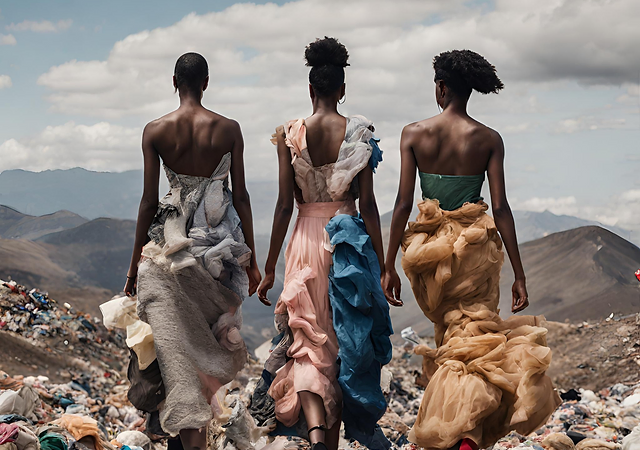
The fashion industry, seemingly obsessed with staying ahead of the curve, is riddled with stories of once-dominant brands and retailers falling apart at the seams. While economic downturns can take their toll, the reasons for collapse are often a complex mix of strategic missteps and a failure to adapt to the ever-evolving landscape.
Financial missteps
Retailers like In The Style, a British online fashion brand, serve as a cautionary tale. Their initial success hinged on influencer collaborations, but a reliance on this trendy tactic proved unsustainable. Mark Tweed, Brand Director, loungewear brand CyberJammies, highlights the danger of unchecked expansion as per him, fast moving businesses suck cash at an increasing rate. And just when revenue falls, businesses with large overhead immediately get into trouble. The Style's rapid growth led to bloated operational costs, leaving them vulnerable when consumer spending dipped.
Retail expert Andrew Spring of Jirsch Sutherland pinpoints dwindling margins as a key factor. As per him fashion retailers struggle to navigate ever-evolving trends. If they focus too much on one trend, they are left with unsold stocks. And if they take a trend too lightly they may end up missing an opportunity. This inability to predict and cater to ever-shifting consumer desires leads to overstock and lost revenue.
The rise and fall of retail giants
Media is full of cautionary tales. Once-ubiquitous brands like Barneys New York and BCBG Max Azria have filed for bankruptcy, citing everything from heavy debt loads to an inability to compete with online giants. The COVID-19 pandemic only exacerbated these issues, as lockdowns forced physical stores to close and consumers migrated online.
One good example is Forever 21, once a fast-fashion giant, filed for bankruptcy in 2019. Experts point to their over-reliance on low-cost manufacturing and a trend-chasing strategy that resulted in mountains of unsold inventory. Their inability to keep pace with the shift towards online shopping and a growing consumer focus on sustainability also contributed to their downfall.
Failing to connect with customers
Spring emphasizes retailers seem to encounter problems when they lose touch with their brand's target audience. This can manifest in poorly chosen product lines or a failure to adapt to changing consumer preferences. For instance, department stores Macy's struggled to compete with the fast-fashion giants like H&M and Zara, which catered to a more trend-conscious audience with quicker turnaround times.
In the fast-paced world of fashion, understanding your target audience is paramount. In The Style, a British online retailer, boomed with influencer collaborations but faltered when it failed to adapt to a cost-of-living crisis and changing consumer preferences, leading to a near-bankruptcy situation. J.C. Penney, a once-dominant American department store chain, alienated its core customer base with drastic modernizations, ultimately filing for bankruptcy in 2020.
Rapid expansion can also be a double-edged sword. Incurring high operational costs to support a growing infrastructure without a corresponding rise in sales can lead to financial strain.
The Rise of e-commerce and the Need to Adapt
The rise of e-commerce has fundamentally altered the retail landscape. While some brands, like Zara, have successfully transitioned to an omnichannel approach, others have been left behind. Legacy retailers burdened by high rents and inflexible store layouts struggle to compete with the agility and convenience offered by online platforms. For example, Macy's, a retail giant, has been closing stores and restructuring operations to adapt to the changing consumer landscape.
The road to recovery adapting and innovating
The fashion industry is a dynamic ecosystem. Understanding the ever-changing landscape and adapting accordingly is crucial for survival. Successful brands are embracing:
Omnichannel strategies: Integrating online and offline shopping experiences to cater to a tech-savvy customer base.
Sustainable practices: Implementing eco-friendly production processes and sourcing materials to attract environmentally conscious consumers.
Data-driven decision making: Utilizing data analytics to understand customer preferences and optimize product offerings and marketing strategies.
Transparency in sourcing and production resonates with today's conscious consumer. Finally, a willingness to adapt to emerging trends, while maintaining a core brand identity, is key to staying relevant. The fashion industry is a testament to the adage, ‘Change is the only constant’. Those who can adapt, innovate, and connect with the ever-evolving consumer will weather the storms and continue to turn trends into profits.
The Indian government plans to expand the Production Linked Incentive (PLI) scheme for textiles by including a wider range of products and lowering the minimum investment and turnover criteria.
Initially launched in 2021 with an approved outlay of Rs10,683 crore, the PLI scheme for textiles has so far been limited to the production of man-made fibers (MMF) apparel, MMF fabrics, and technical textile products. The scheme was reopened last year after the initial round did not attract enough investments to fully utilise the earmarked funds. Despite industry pressure to include cotton garments and reduce the investment and turnover thresholds, no changes were made during the second application round.
Textiles Minister Giriraj Singh recently announced that the PLI scheme might be expanded to cover all types of garments, ending speculation on the matter. However expansion of the scheme to cover garments made of all fibers, including cotton would entail lowering of the minimum investment and turnover criteria to ensure benefits to garment manufacturing units, opines an industry official
The scheme is currently divided into two parts: the first part requires a minimum investment of Rs100 crore and a minimum turnover of Rs200 crore, while the second part requires a minimum investment of Rs300 crore and a minimum turnover of Rs400 crore. The incentive is higher for entities opting for the higher investment and turnover criteria.
The proposed changes to the scheme will require several approvals. Firstly, it needs to be approved by Textile Ministry andthe Textiles Minister. Thereafter, the Finance Ministry needs to be approve the proposal, adds the official.
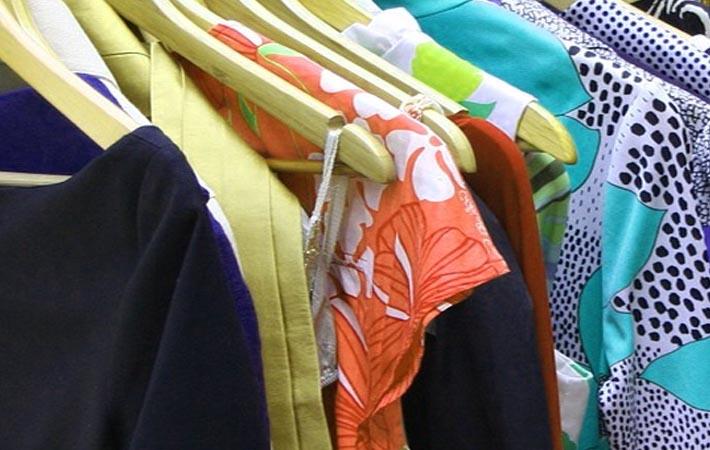
For decades, Indian apparel brands and retailers relied primarily on domestic sourcing. However, in recent years, there's been a significant shift towards Bangladesh. This trend, spurred by several factors, is transforming the landscape of the Indian apparel market.
Bangladesh a cost-competitive edge
The primary driver for this shift is cost competitiveness. Bangladesh offers significant advantages over domestic sourcing for Indian companies.
Labor costs: Bangladesh boasts lower labor costs compared to India. A 2023 study by the Garment Manufacturers and Exporters Association (BGMEA) of Bangladesh revealed that average wages in the Bangladeshi garment industry are nearly 20 per cent lower than their Indian counterparts.
Duty benefits: The South Asian Free Trade Agreement (SAFTA) allows duty-free import of certain apparel items from Bangladesh to India. This significantly reduces landed costs for Indian companies.
Strong manufacturing base: Bangladesh has emerged as a global leader in apparel manufacturing, boasting a skilled workforce and efficient production lines. Leading brands like H&M, Zara, and GAP source heavily from Bangladesh, a testament to its capabilities.
Reliance Retail, one of India's largest retail chains, exemplifies this trend. In 2017, they established a sourcing office in Bangladesh and have since ramped up their procurement from the country. As Mohit Batra, Country Head of Reliance's Bangladesh operations explains, they are offering huge quantities and are looking for manufacturers that can offer 20 per cent of their capacity. This highlights the significant cost savings Reliance enjoys by sourcing from Bangladesh.
Table: Bangladesh apparel exports to India productwise
|
Product category |
Percentage |
|
Knitwear (T-shirts, polos, etc.) |
60% |
|
Woven Shirts and Blouses |
20% |
|
Bottoms (Jeans, trousers) |
15% |
|
Others (Dresses, jackets) |
5% |
Product diversification in focus
While cost remains a major driver, Indian brands are also looking at Bangladesh for product diversification. Bangladesh excels in knitwear production, particularly T-shirts, polos, and sweatshirts. This aligns perfectly with India's growing demand for casual wear. Sweaters, hoodies, and other knitted garments are popular Bangladeshi exports, leveraging the country's expertise in knitwear manufacturing. Jeans and denim clothing are another major category, as Bangladesh has emerged as a global leader in denim production.
|
Year |
Bangladesh apparel exports to India |
Growth rate |
|
2017 |
129.81 |
- |
|
2018 |
279.19 |
115% |
|
2023 (estimated) |
403 |
45% (CAGR) |
The increasing sourcing from Bangladesh presents a win-win situation for both countries. India gains access to cost-competitive, high-quality garments, while Bangladesh expands its export market. As Deepak Mohindra, Founder of Apparel Sourcing Week, predicts, "Bangladesh's exports of garments to India could exceed $1 billion in two years." This trend is likely to continue as Indian brands and retailers seek to optimize their supply chains and cater to the growing demand for affordable fashion.

